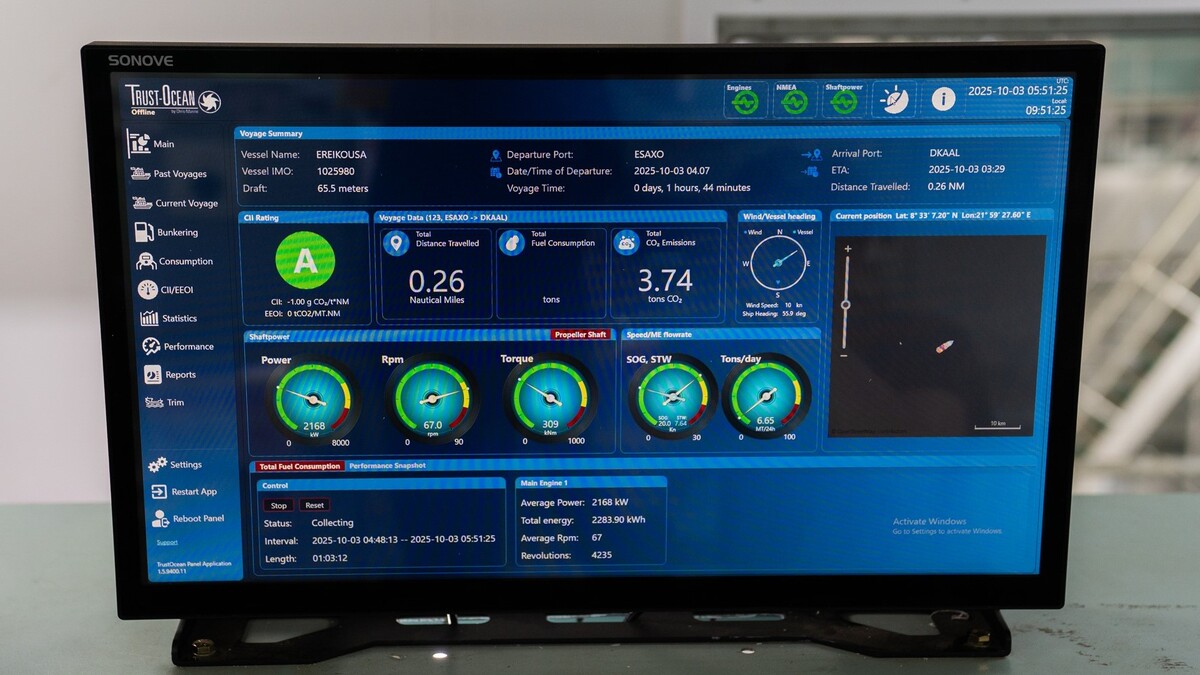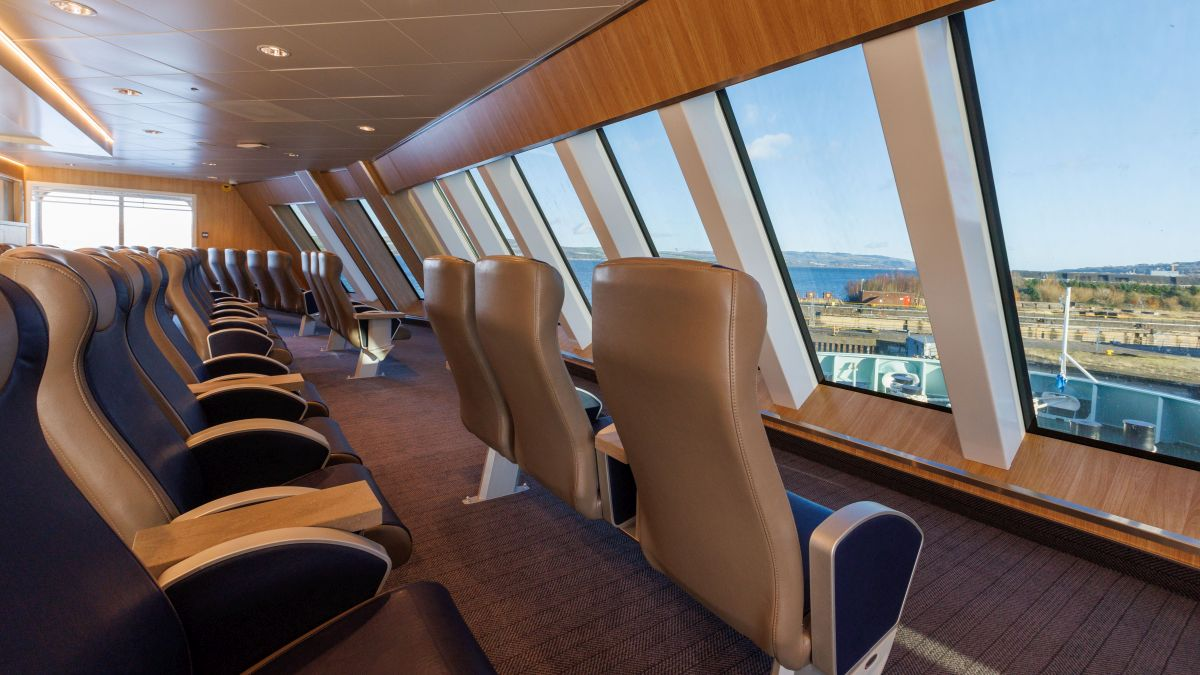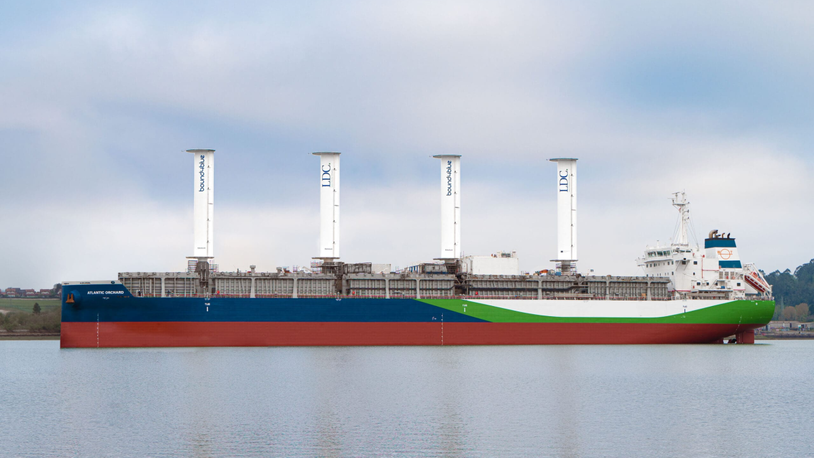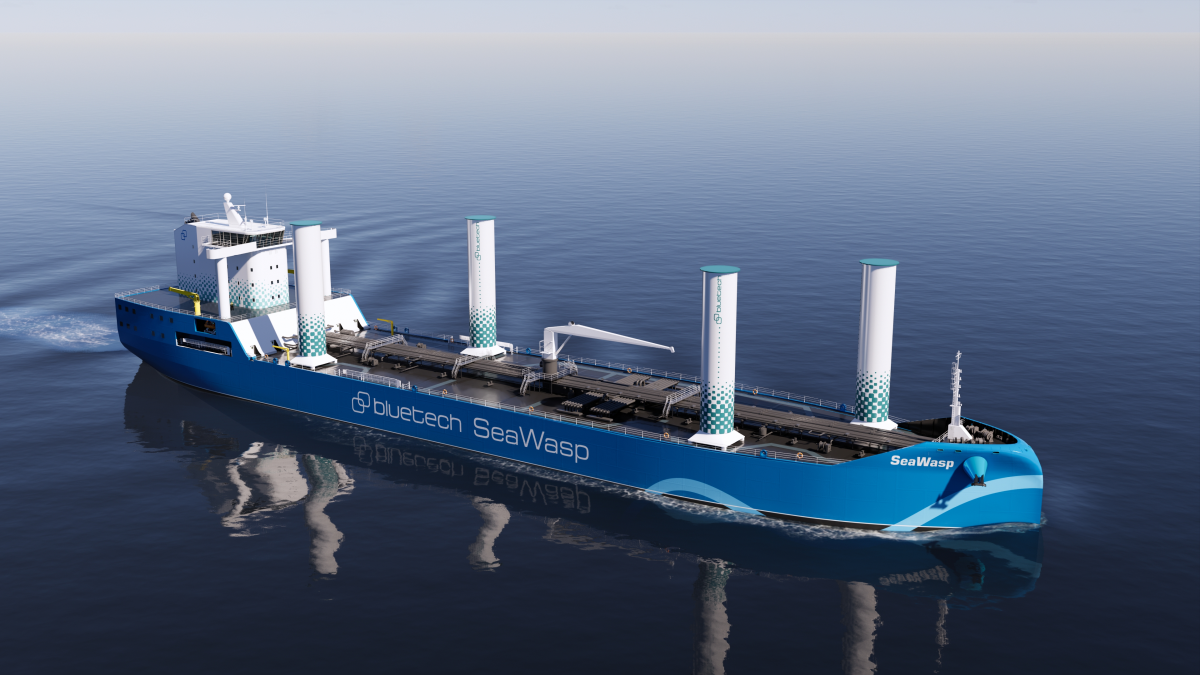Business Sectors
Contents
Register to read more articles.
Weaving together the past and future in CalMac's latest vessels
A bespoke tartan is among the heritage interior design features that will be incorporated into CalMac’s next-generation ferries
As Caledonian MacBrayne (CalMac) prepares to celebrate its 175th anniversary in 2026, Scotland and the UK’s largest ferry operator has its sights set on the future as well as the past.
The company, that can trace its roots back to a fleet of eight paddle steamers, is combining light Scandinavian-inspired interiors and Scottish heritage – most notably a CalMac Harris Tweed tartan – in its next-generation all-electric vessels. The design also marks the ongoing collaboration between CalMac and asset owner Caledonian Maritime Assets Ltd (CMAL), which procures and owns the ferries and operates the infrastructure.
CMAL technical manager Lewis Hammel says the latest vessels, four newbuilds constructed at Turkey’s Cemre shipyard and the more recent contract to build seven Loch-class ferries at Poland’s Remontowa Shipbuilding, are illustrative of the reimagined interior design of both major and smaller vessels.
He tells Passenger Ship Interior & Refurbishment Review, “Our newbuilds previous to that, Loch Seaforth and most recently Glen Sannox, were a change for the CalMac ships and had more of a Scandinavian feel.”
This has evolved further with the quartet of Turkish-built vessels, each with capacity for up to 450 passengers and 100 cars or 14 commercial vehicles, which will debut on the first vessel, Isle of Islay. As well as plying scenic tourist routes on Scotland’s west coast, the ferries provide a vital lifeline connecting island and remote peninsular communities to the mainland. Nevertheless, CMAL wants these rugged workhorses to have an increasingly aesthetic appeal.
“They are light, and the windows on these new vessels are large, so a lot of natural light comes in,” says Mr Hammel. “There are a lot of oak and white finishes, so it is very natural. We started this with the first two vessels, which are for Islay. Given the greenery of the Scottish islands, the beaches and whisky, colour themes of browns, oranges and greens have made their way into these four vessels. Moreover, the Scottish islands signature white housing with stone paving and slated roofs have made their way into design with white wall finishes and grey flooring throughout. Although the latter two vessels are for the Outer Hebrides rather than Islay, the same concept was kept, given that they’re sister ships. It is a big change compared with the ships that were built in the 1980s and early 1990s.”
The four larger vessels form part of a programme of investment by CMAL, funded through Scottish government commitments to capital investment of around £700M (US$936M) in ferry infrastructure and related services.
On a smaller scale, the refreshed look will also feature on the latest newbuilds underway in Poland. This shipbuilding contract is valued at £148M, and delivery of the first vessel is expected in 2027.
“Even though they’re only 10, 15 or 20-minute journeys, we still want the vessels to provide a pleasant passenger experience,” says Mr Hammel.
CMAL’s procurement process includes technical specifications and appendices outlining the interior design.
“For the vessels in Cemre, we set out the quality of materials and standard that we were looking for,” he explains. “We developed that interior specification and interior concept during the concept design phase and worked with navalue GmbH, a German custom ferry design company, and that has carried its way through into what we’re seeing as the final product on the ships. CalMac has also been involved in the whole process.
“In terms of the outfitters, Cemre Shipyard proposed a company called Harmony Marine Solutions, who are a Turkish company and used to be part of Vestnes Ocean.”
On the major vessels, the updated interiors include moving passenger accommodation forward, to provide panoramic views from venues such as the new Mariner’s Restaurant. Other considerations include improved accessibility features such as coloured nosings on staircases, double height handrails, floor tactiles and height-adjustable tables. Even the smaller ships include a wheelchair accessible car deck, whereas in the past there was only a small gap for drivers to open vehicle doors.
CalMac head of customer experience, Caroline Black, takes up the story and says, “A lot of the thinking has been in the design. We are working with design partner Seymour Powell to develop a sensitive, engaging and relevant ‘design DNA’ which will run through all our vessels, ports and even our uniforms to create a recognisable CalMac design experience across our network for the years to come.
“We also want them to have that signature CalMac feel, regardless of the fact that they are brand new vessels rather than ships passengers might have been on for the last 30 years. We’re trying to lean into the CalMac design DNA that should run across all our vessels.”
This has involved a consultation exercise gathering real-time feedback from both customers, passengers and crew.
“This provides an understanding of how they use the space,” she says. “Customers want comfort and luxury, and the crew need durability and longevity. It’s how you combine those two things and still maintain that CalMac look and experience while maintaining that important recognition that you are travelling on a ferry. We want it to feel much more like an elevated, positive at sea experience. That feedback has been critical to helping the design develop, so we get a good balance of durability and sustainability.
“We are trying to ensure that the customer experience in terms of wayfinding, signage and how our customers will navigate the spaces are as fuss-free, open and as welcoming as possible”
“Within the larger vessels we’re creating a new design for the children’s area that moves away from screen-based entertainment and is about engaging them with nature and the local environment, but also, durability and cleanliness in something like a children’s area is critical, so the balance is important.”
In addition to showcasing Scottish land and seascapes through the new larger windows, CalMac is placing a big emphasis on sourcing as much retail as possible from local islands, communities and suppliers.
“The concept in these new ships is seeing the island as you arrive and knowing that what you’re eating and drinking is made there,” says Ms Black. “It’s such a lovely synergy. Supporting island communities and suppliers is a key mission and commitment of CalMac and we pride ourselves on weaving this into as much of our retail and design experience as possible.”
No material is more synonymous with Scotland and the Scottish isles than tartan, and CalMac has commissioned a bespoke tartan made from equally famous Harris Tweed cloth.
“The tweed is a good example of thinking about both the past and the future and trying to design around that,” she explains. “It’s based on the CalMac colours, so there’s black, red and yellow in there along with some brown and green to represent the beautiful landscapes. There will be nods to it throughout the vessels in a practical way, such as on chair arms, and it will also help link everything together and can move to uniforms and retail.”
Whether it’s a 20-minute hop or a two-hour journey, the partnership between CMAL and CalMac – a brand which resonates with so many people on the west coast of Scotland – is aimed at making all ferry journeys a comfortable and meaningful experience.
As the next generation of vessels enter service, CalMac is firmly anchoring itself in both Scottish heritage and innovation to take the company forward to the next chapter in its 175-year history.
Sign up for Riviera’s series of technical and operational webinars and conferences:
- Register to attend by visiting our events page.
- Watch recordings from all of our webinars in the webinar library.
Related to this Story
Events
International Bulk Shipping Conference 2025
Tankers 2030 Conference
Maritime Navigation Innovation Webinar Week
© 2024 Riviera Maritime Media Ltd.















